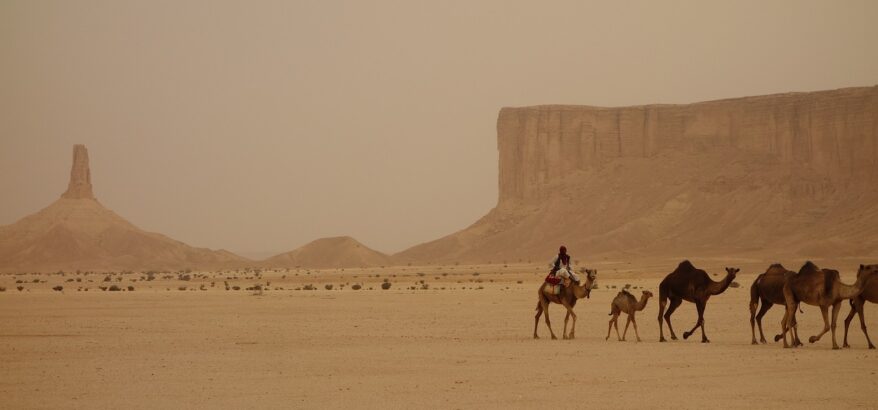In recent years, Saudi Arabia has emerged as a prominent destination on the global tourism map, marking a significant shift in its economic and social landscape. With sweeping reforms and ambitious initiatives, the Kingdom has opened its doors to tourists from around the world, unveiling a treasure trove of cultural heritage, natural wonders, and modern attractions. Let’s delve into the factors driving the rise of tour in Saudi Arabia and explore the facts and figures that highlight this remarkable journey.
Vision 2030: A Catalyst for Change
Saudi Arabia’s Vision 2030 has been instrumental in reshaping the country’s tourism landscape. With a strategic focus on economic diversification, the vision has spurred significant investments and policy reforms in the tourism sector. According to data from the Saudi Commission for Tourism and National Heritage (SCTH), these efforts have led to a notable increase in tourist arrivals, with over 20 million visitors recorded in recent years. This surge in tourism not only contributes to the country’s GDP but also creates employment opportunities and stimulates economic growth across various sectors.
Furthermore, Vision 2030 has prioritized the development of tourIsm infrastructure, including world-class hotels, resorts, and entertainment facilities. This emphasis on modern amenities and services enhances the overall visitor experience, positioning Saudi Arabia as a competitive global tourism destination. By leveraging its cultural heritage, natural attractions, and modern infrastructure, the Kingdom is poised to achieve its vision of becoming a premier hub for leisure and business travelers alike.
Historical and Cultural Tourism
Saudi Arabia’s rich historical and cultural heritage is a major draw for tourists seeking authentic experiences. Iconic sites such as Mada’in Saleh, a UNESCO World Heritage Site showcasing Nabatean architecture, and the ancient city of Diriyah, with its historical significance as the birthplace of the Kingdom, attract visitors from around the world. These cultural treasures not only offer insights into Saudi Arabia’s past but also serve as catalysts for cultural exchange and dialogue.
Moreover, the Kingdom’s commitment to preserving and promoting its heritage is evident in initiatives like the restoration of Diriyah and the development of cultural festivals and events. These efforts not only showcase Saudi Arabia’s cultural diversity but also contribute to sustainable tourism practices. As a result, tourists can immerse themselves in the country’s vibrant history, traditions, and arts, creating memorable experiences that foster a deeper appreciation for Saudi Arabia’s cultural legacy.
Natural Splendor
Saudi Arabia’s diverse natural landscapes are another key attraction for tourists. The picturesque Red Sea coastline, with its crystal-clear waters and vibrant coral reefs, offers unparalleled opportunities for diving, snorkeling, and beachside relaxation. The development of coastal resorts and eco-friendly tourism initiatives along the Red Sea has bolstered the Kingdom’s appeal as a marine tourism destination.
Furthermore, the vast deserts of Saudi Arabia, including the renowned Empty Quarter, captivate adventure seekers with their majestic sand dunes and unique desert experiences. The expansion of adventure tourism activities such as desert safaris, camel trekking, and hot air balloon rides allows visitors to explore the desert’s beauty and tranquility. Additionally, the conservation efforts in ecologically sensitive areas like AlUla and Al-Hijr (Hegra) preserve the natural heritage for future generations to enjoy.
Modern Marvels
In tandem with its historical and natural attractions, Saudi Arabia is embracing modernity and innovation in its tourIsm offerings. The visionary project of NEOM, a futuristic city focused on sustainability and technology, exemplifies the Kingdom’s commitment to pioneering new frontiers in tourism. NEOM’s planned attractions, such as eco-friendly resorts, smart cities, and immersive experiences, herald a new era of tourism centered on innovation and sustainability.
Moreover, cities like Riyadh and Jeddah showcase modern architectural marvels, including skyscrapers, luxury hotels, and world-class shopping malls. The integration of cultural and entertainment districts, such as the Riyadh Season and Jeddah Waterfront, enhances the urban experience for tourists, offering a blend of tradition and modernity. These developments not only cater to leisure travelers but also attract business travelers and investors, positioning Saudi Arabia as a dynamic hub for tourIsm and commerce.
Key Figures and Statistics
The impact of Saudi Arabia’s tourIsm resurgence is evident in key figures and statistics:
- Over 20 million tourist arrivals in recent years, contributing to economic growth and job creation.
- Strategic investments in hospitality infrastructure, including luxury hotels and resorts, to enhance the visitor experience.
- The tourism sector’s significant contribution to the country’s GDP, with projections indicating continued growth and diversification.
Challenges and Opportunities
As Saudi Arabia embraces its role as a leading tourism destination, it faces both challenges and opportunities. Sustainable toursm practices, conservation of natural and cultural heritage, and ensuring a positive visitor experience are paramount. Collaborative efforts between the government, private sector, and local communities are essential to address these challenges and capitalize on the opportunities presented by toursm growth.
Conclusion
The rise of tourIsm in Saudi Arabia signifies a transformative journey driven by Vision 2030’s strategic vision, cultural heritage, natural beauty, and modern innovations. As the Kingdom continues to invest in tourism infrastructure and sustainable practices, it is poised to captivate global travelers and establish itself as a premier toursm destination. With a harmonious blend of tradition and modernity, Saudi Arabia invites the world to discover its captivating landscapes, vibrant culture, and warm hospitality.

